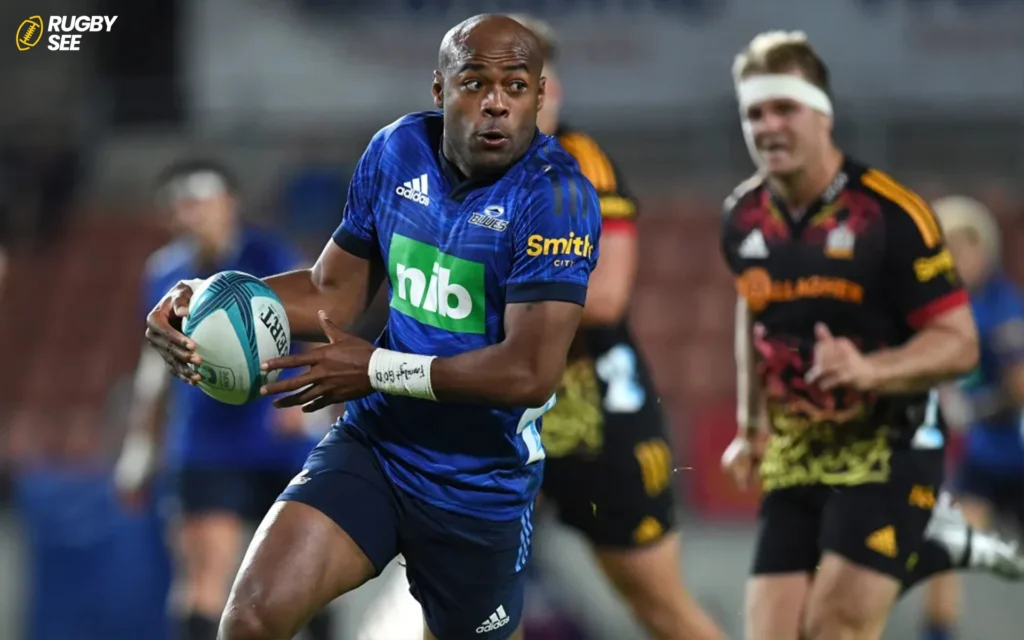Speed is a desirable asset in the dynamic and demanding sport of rugby. Players with exceptional speed can turn a game on its head and make them valuable to any team. This article from Rugbysee explores the best rugby positions for fast players, where their speed not only complements the requirements of the role but also enhances team performance.
The Wing: The Speedster’s Domain
Wings are traditionally the fastest players on a rugby team, tasked with finishing offensive moves and scoring tries. Positioned on the outermost parts of the field, wings exploit gaps in the opposition’s defense, using their speed to outrun defenders and secure points. Fast players in this position can change the game’s outcome with a single burst of speed, making it a thrilling role for any speed-oriented athlete.
The Fullback: The Last Line of Defense and Counterattack Catalyst
Fullbacks require a blend of speed, agility, and tactical awareness. Positioned as the last line of defense, they must quickly cover ground to thwart opposition breaks. However, it’s their role in counterattacks that truly leverages their speed. A fast fullback can turn defense into offense in moments, breaking through lines and setting the pace for counterattacking plays, making this position a perfect match for players with speed and vision and if you want to know about Successful Rugby teams read Which Rugby Team is the Most Successful.
The Scrum-Half: Quickness off the Mark
While not immediately obvious, scrum-halves benefit greatly from speed. Quickness off the mark allows them to snipe around the edges of rucks and mauls, exploiting gaps and drawing defenders. Fast scrum-halves can keep the opposition guessing, using their speed to create opportunities and maintain the tempo of the game, showcasing that speed in rugby isn’t just about long-distance runs but also about acceleration and agility in close quarters.

The Outside Centre: Speed in Space
Outside centres have the challenging role of breaking through defensive lines using a combination of speed, strength, and guile. A fast outside centre can be a devastating offensive weapon, capable of executing line breaks and providing try-scoring passes. Their speed allows them to cover defensively as well, making them pivotal in both attacking and defensive strategies.
Training and Development: Maximizing Speed in Rugby
Fast players can enhance their impact on the field through targeted training and skill development. Sprint training, agility drills, and endurance workouts are crucial for maintaining and improving speed. Additionally, skills training focusing on ball handling, spatial awareness, and tactical decision-making ensures that fast players can effectively utilize their speed within the context of the game.
The Psychological Impact of Speed
Speed on the rugby field isn’t just a physical advantage—it also plays a significant psychological role. Fast players can intimidate opponents, creating hesitancy and forcing defensive errors. The mere presence of a known speedster can alter the opposition’s tactics, providing strategic advantages beyond the immediate play.
Adapting Skills for Strategic Advantage
Fast players should continuously adapt their skills to maximize their speed. This includes refining running techniques, improving kick returns, and mastering one-on-one scenarios. By broadening their skill set, fast players can exploit their speed across multiple phases of play, increasing their value to the team.

Leveraging Speed in Modern Rugby: Beyond Traditional Roles
As rugby evolves, so does the role of speed across all positions. Fast players are finding opportunities to shine beyond the traditional speed-centric roles, challenging old stereotypes and bringing a new dynamic to the sport.
The Evolution of Rugby’s Physical Demands
Today’s rugby places a premium on physical fitness and versatility, with speed becoming a critical attribute for players in nearly every position. This shift has led to an increase in the overall pace of the game, making it more exciting and demanding. Players in traditionally “slower” positions, such as forwards, are now expected to exhibit a level of speed that matches their skills in strength and tactics.
Innovative Training Techniques for Speed
To meet these evolving demands, rugby training programs have incorporated innovative techniques that enhance speed and agility. Plyometric training, sprint mechanics, and HIIT (High-Intensity Interval Training) are now staples in a rugby player’s regimen, designed to improve acceleration, top speed, and the ability to change direction quickly — essential skills for breaking through defenses and creating space.
The Impact of Speed on Team Strategy
The strategic implications of having fast players in various positions are profound. Coaches can devise more complex and dynamic game plans, knowing they have the speed to back them up. This can lead to more versatile attacking strategies, defensive systems that can quickly transition into counter-attacks, and special teams’ plays that exploit the sheer pace of their players.
Speed and Rugby Sevens: A Perfect Match
The shorter format of Rugby Sevens highlights the paramount importance of speed in the game. In this fast-paced, high-scoring variant, speed is not just an advantage; it’s essential. Sevens players often showcase the kind of pace that would be highly effective in the traditional 15-a-side game, illustrating how speed can dominate in open spaces.

Nutrition and Recovery: Supporting Speed
Maintaining and improving speed isn’t just about training hard; it’s also about training smart. Proper nutrition and recovery play a crucial role in a fast player’s regimen. Diets rich in lean proteins, complex carbohydrates, and essential fats, combined with adequate rest and recovery techniques, ensure that players can perform at their peak speeds consistently and if you want to know about The Rectangle Shape on Rugby Shirts read What is the rectangle on the back of rugby shirts read What is the rectangle on the back of rugby shirts.
The Mental Game: Speed of Thought
Speed on the field is not merely physical; it’s also mental. Fast players must have the speed of thought to match their physical quickness. This means making split-second decisions, anticipating opponents’ moves, and reading the game faster than others. Developing these cognitive skills is as important as physical training, enhancing a player’s ability to utilize their speed effectively.
Role Models and Inspiration
The rugby world is full of fast players who have made their mark in various positions. Young players looking to utilize their speed can find inspiration in the careers of these athletes, studying their play styles, training methods, and how they adapt their game to leverage their speed best. From legendary wings to speedy forwards, the examples are plentiful and varied.
For fast players, rugby offers a broad canvas to showcase their speed across multiple positions. The game’s evolution means that speed is now a valued asset in every role, from the traditional sprinting roles on the wings to the dynamic contributions of fast forwards. Training, nutrition, and the mental aspect of speed are all critical components that fast players must consider to maximize their impact on the field.
As rugby continues to evolve, the integration of speed into all aspects of the game promises to make the sport even more thrilling for players and fans alike. Fast players have the chance to redefine their roles, push the boundaries of the sport, and inspire the next generation of rugby talent.










